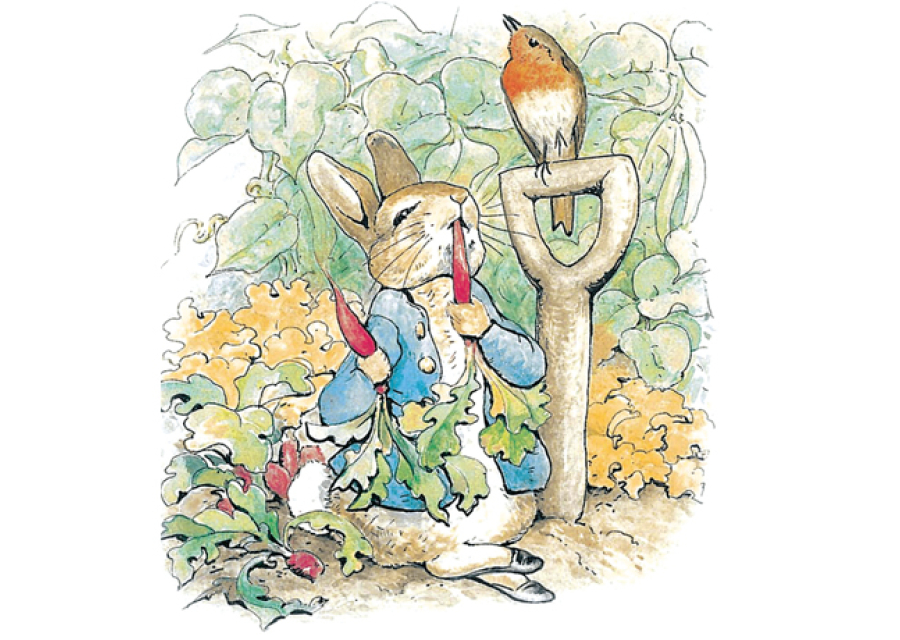
Buffalo, NY - Once upon a time, there were four little rabbits and their names were Flopsy, Mopsy, Cottontail and Peter. They lived with their mother in a sandbank underneath the root of a very big fir tree. One day, their mother dropped them off at soccer practice and picked them up
promptly afterward. When they got home, they all had bread and milk and blackberries.
That is roughly how the classic Beatrix Potter story from 1902 would go if it had been set in the American suburbs. But even if Potter hadn’t set her books in England’s Lake District, she would never have chosen a suburban setting. The suburbs kill the narrative adventure that is the lifeblood of children’s literature.
Reading picture books to my children over the past 10 years, I’ve noticed how many of the stories shun a suburban setting. This is no accident: the tales that most grip the imagination of children (and adults), with few exceptions, require rural or urban locations for their drama and vitality.
To simplify, the antithesis of North American suburbia is walkability and picture books with literary merit love walkability. Compelling children’s stories require that their characters are able to navigate their setting at a pedestrian scale and pace. For example, in the U.S. author Arnold Lobel’s classic stories of the 1970s, Frog and Toad never appear in a car despite being thoroughly anthropomorphised. What most draws the reader into the stories are the adventures that the amphibians experience between their houses – in the meadow, the woods and the tall grass. They climb mountains and swim in ponds but they also walk everywhere: to fly a kite, to buy ice cream, to fulfill a to-do list.
In urban settings, walkability is closely linked to public transport, which is another narrative avenue for rich engagement with one’s environment. Accordingly, the number of picture books that feature trains and buses is significantly greater than the number of trains and buses that most Americans experience. Yet I’ve never seen a picture book that features a minivan or an SUV. The zookeeper in Peggy Rathmann’s Good Night, Gorilla (1994) lives within walking distance of the zoo. In Erin and Philip Stead’s A Sick Day for Amos McGee (2011), the zookeeper takes the bus to work.
Both commutes are integral to the stories’ plots, enabling shenanigans for the zoo animals. Besides public transport, urban settings give other ample opportunities for their characters to explore their immediate environment. Cities are where we’re more likely to find civic places, such as zoos, libraries or concert venues. Cities tend to have more diverse kinds of people and more intergenerational activity in both public and private places than in suburbia. Good picture books such as Ben’s Trumpet (1979) by Rachel Isadora and A Chair for My Mother (1982) by Vera Williams exploit these opportunities in their stories.
It’s one thing to find enviable walkability in Esphyr Slobodkina’s Caps for Sale (1940) or Margaret and H.A. Rey’s Curious George series (1941-66) or Ludwig Bemelmans’ Madeline series (1939-61) – books written by European émigrés to the U.S. well before American housing developments and ‘big box’ stores became the dominant pattern of land use in the mid-20th century. But to continue to find dynamic city living in bestsellers such as Bernard Waber’s The House on East 88th Street (1962) or Mo Willems’ Knuffle Bunny (2004) is revealing.
More than any other works of fiction, picture books depend on their setting. When the automobile dominates the setting, the narrative dies faster than a trip down a cul-de-sac. Even when there are private modes of transportation in children’s literature, they are ships, bicycles or hot-air balloons, where the transported are engaged with the world around them and the adventure or mystery that this world brings.
It’s true that some popular picture books do seem to have a suburban setting: Victoria Kann’s Pinkalicious series (2006-), the Berenstain Bears series (1962-) by the Berenstain family, and Norman Bridwell’s Clifford the Big Red Dog (1963-) come to mind. But these books also come to mind when I consider books I’d rather toss than read – not because they take place in the suburbs but because they’re so poorly written and illustrated. My only claim here is that the best children’s books forgo suburbia. There are, nevertheless, some exceptions to this rule. In Judith Viorst and Ray Cruz’s classic 1972 picture book, for example, Alexander appears to be chauffeured around the suburbs by his mother; in that scenario, who wouldn’t be having a terrible, horrible, no good, very bad day? But for every quality picture book that has a suburban setting, there are 100 that don’t.
At least since Aesop’s fable The Town Mouse and the Country Mouse, many children’s stories exhibit a kind of anti-urban romanticism. Cities are dangerous and dirty places in contrast to the idyllic countryside. Books set in cities often react against this trend by showing the benefits of city life. Yet this counter-reaction is, arguably, guilty of romanticizing the urban. Children’s books that use pedestrian settings, whether urban or rural, fall prey to both kinds of romanticization, displaying exclusively the attractiveness of a walkable town or a tranquil forest. owever, the accuracy of these portrayals is not the point of the settings. Rather, their job is to serve the narrative and delight the reader.
Children’s literature thrives on imaginative or surprising encounters, which need a geography that creates mischief and curiosity. But the suburbs, for all their benefits in real life, are places that in children’s literature lack imagination or at least don’t provide suitable stage-sets
for imaginative adventure and exploration: they are the geography of nowhere. Consequently, the most engaging stories are almost never set there.
Philip Reed, PhD, is a professor of philosophy at Canisius and associate
dean of the College of Arts & Sciences. This is an abridged version of the
article “Why are there so few children’s books set in the suburbs.” The
full version of this article was originally published in Psyche (psyche.co).
WEB EXTRA
To read the unabridged version of the Psyche article, click here.



